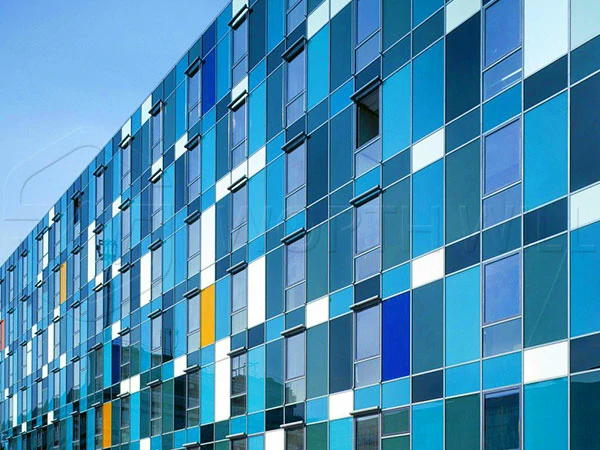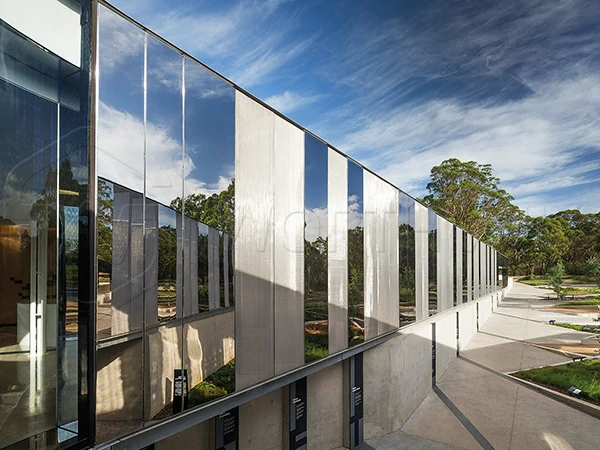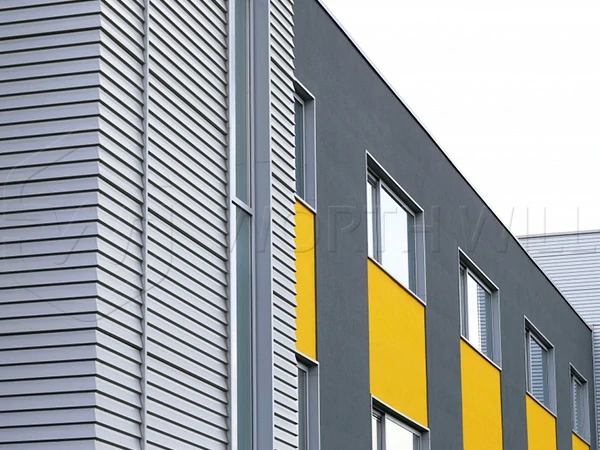Aluminum Solid Panel
- Home
- Aluminum Solid Panel
Aluminum panels are versatile and durable materials used in a variety of applications, ranging from architectural cladding to interior design. Two common choices in the world of aluminum panels are aluminum solid panels and aluminum composite panels. While they share some similarities, they also have distinct characteristics that set them apart.


|
Materials: |
Aluminum Alloy 1xxx, 3xxx, 5xxx ,6xxx |
|
Standard size: |
1000mmx2000mm, 1200mmx2400mm |
|
Other size: |
Max. Width: 1800mm Max. Length: 6000mm (Flat) |
|
Thickness: |
1mm, 1.5mm, 2mm, 3mm, 4mm, 5mm, 6mm, etc. |
|
Finishing: |
Powder coated, PVDF paint |
|
Color: |
Any RAL colors, Wooden Grain Color, Stone Color, etc. |
|
Paint: |
AkzoNobel, PPG, Becker, KFCC, Tiger, etc |
|
Patterns |
Customized |
|
Fire rated performance |
Pass British BSI fire-rated test (BS476) |
What Is Aluminum Solid Panel?
Aluminum solid panels, as the name suggests, are made entirely from solid aluminum sheets. They are popular for their robustness and structural integrity. These panels are typically application in applications. Where strength and durability are of paramount importance. Here are some key features of aluminum solid panels:
Strength and Durability: Solid aluminium panels are popular for their strength and durability. They can withstand various environmental conditions, including extreme weather, making them suitable for outdoor applications.
Weight: Despite their sturdiness, aluminum solid panels are relatively lightweight, making them a practical choice for architectural cladding and other construction projects.
Aesthetic Appeal: Fabricated into various shapes and designs, making them suitable for creating unique and visually appealing facades or interior designs.
Maintenance: Aluminum solid panels are relatively low maintenance, requiring only occasional cleaning to maintain their appearance.
Customization: They have customization with a wide range of finishes, including powder coating, anodizing. Or other decorative treatments to achieve the desired aesthetic.

Aluminum Composite Panel
Aluminum composite panels, on the other hand, consist of two aluminum sheets bonded to a core material.
Usually made of polyethylene (PE) or mineral-filled core (FR).
These panels are often use in a wide range of applications, including architectural cladding, signage, and interior design. Here are some key features of aluminum composite panels:
Lightweight: Aluminum composite panels are lighter than solid aluminum panels, which makes them easier to handle and install.
Insulation: The core material in aluminum composite panels can provide thermal insulation properties, making them energy-efficient in some applications.
Versatility: They are available in a variety of colors, textures, and finishes. It offers designers and architects a wide range of aesthetic options.
Cost-Effective: Aluminum composite panels are generally more cost-effective than solid panels, making them a popular choice for projects with budget constraints.
Maintenance: They require regular maintenance to keep their appearance and performance at their best. The composite nature of these panels means that moisture can seep into the core over time, potentially causing issues if not maintained properly.
Key Differences
Now that we’ve explored the characteristics of both aluminum solid panels and aluminum composite panels, let’s highlight the key differences between the two:
Composition: The most significant difference is the composition. Solid panels are made entirely of aluminum. While composite panels consist of two thin aluminum sheets bonded to a core material.
Strength: Solid panels are stronger and more durable than composite panels, making them a better choice for applications requiring structural integrity.
Weight: Composite panels are lighter, which can be an advantage for ease of handling and installation.
Insulation: Composite panels offer better thermal insulation due to their core material, making them suitable for some energy-efficient applications.
Cost: Solid panels are typically more expensive than composite panels, which are often choose for cost-effective solutions.
What is the difference between aluminum panel and aluminum composite panel?
Choosing between aluminum solid panels and aluminum composite panels. Depends on your specific project requirements and priorities.
If strength, durability, and a high-end aesthetic are your main considerations, aluminum solid panels may be the ideal choice.
On the other hand, if you are working within a budget, require insulation properties, or need a lightweight solution.
Aluminum composite panels could be a more suitable option.
It’s essential to weigh the pros and cons of each type of panel and consult with a professional.
It ensures you select the best material for your project’s needs.
